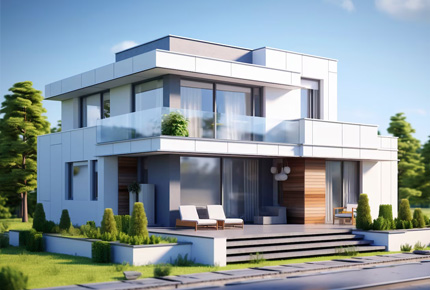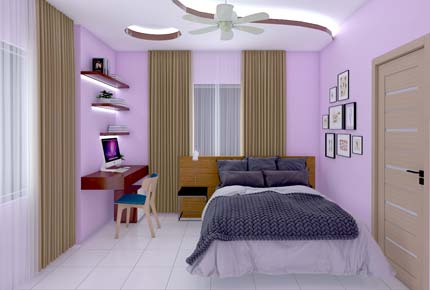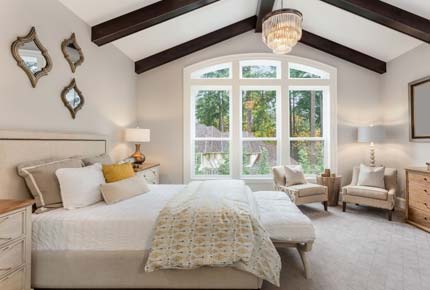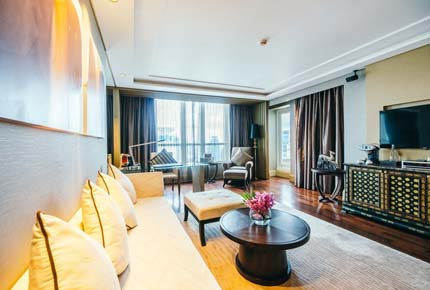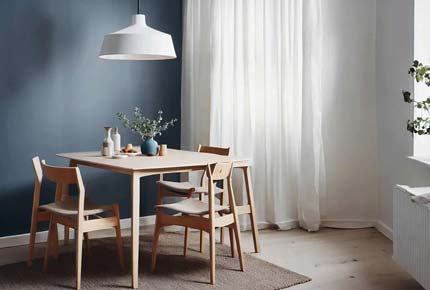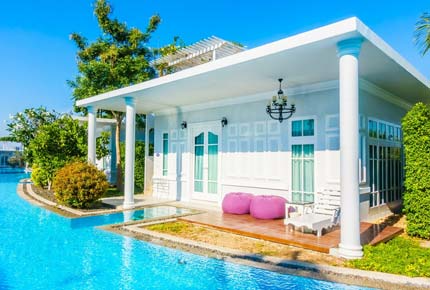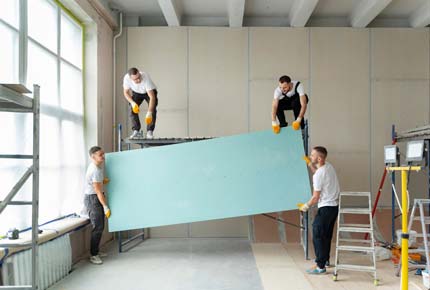Difference between commercial and residential interior design
Understanding the difference between commercial and residential interior design is crucial when planning a design project. Interior design is a vital aspect of creating spaces that are functional and appealing. Whether it’s a home or a corporate office, the success of the project lies in aligning the design with its purpose.
However, commercial and residential interior designs are different in their approach, purpose, and execution. In this blog post, we will discuss the key distinctions between commercial and residential interiors in the context of Bangladesh.
Learn how to create the perfect space! Let us help you create a space designed according to your needs—whether it is home or business. Contact us today for expert guidance!
Get in touch with us today!

Residential interior design
Residential interior design focuses on designing living spaces, such as homes, apartments, and condos, to create environments that reflect the personal taste and lifestyle of the clients. The goal of that design is to ensure that spaces are comfortable, functional, and aesthetically pleasing. Residential spaces include:
Main aspects of residential interior design
It is centered around creating comfortable, functional, and pleasing living spaces that reflect the personality and lifestyle of clients. By focusing on the following aspects, designers work on environments that enhance the quality of life and make a house truly feel like a home. Here are the main aspects of residential interior design:
- Personalization and style: The primary focus of residential interior design is to create spaces that reflect individual tastes. This involves choosing colors, furniture, and decor that align with style, whether it's modern, traditional, or any other personal preference.
- Lighting design: Designers use a combination of natural light, task lighting, and accent lighting to create a well-lit environment. It enhances the overall atmosphere and practicality of the home.
- Color and texture: Color schemes and textures play a significant role in residential design. Designers choose colors and materials that create a good look and feel, while also considering the impact of textures on comfort.
- Space planning: Space planning involves arranging furniture and elements within a room to maximize the use of space. Designers consider factors such as traffic patterns, furniture arrangement, and storage solutions to create well-organized and functional living areas.
- Materials and finishes: The selection of materials and finishes is an important aspect of residential interior design. Designers choose materials that are both pleasing and durable, such as flooring, wall coverings, and countertops.
- Safety and accessibility: Ensuring safety and accessibility is essential in residential design, especially for families with young children, elderly members, or individuals with disabilities.
Commercial interior design
Commercial interior design focuses on creating functional, visually appealing environments for businesses, organizations, and public spaces. By creating well-designed spaces, commercial interiors can significantly influence productivity, customer satisfaction, and overall business success. Some commercial spaces include:
- Hotels & Motels
- Restaurants
- Hospitals & Healthcare
- Workstation
- Industries
- Office Furniture
- Fitness and Spa Centers
- Office Interior
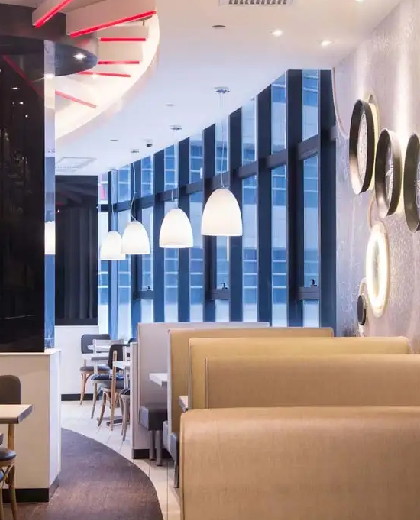
Key features of commercial interior design
Commercial interior design plays a crucial role in creating spaces that are functional, pleasing, and reflective of a brand’s identity. It is about creating environments that support a business’s operations. Here are the key features of effective commercial interior design:
- Branding and identity
- Functionality and space utilization
- Durability and material selection
- Compliance with building codes
- Flexible and adaptive spaces
- Sustainability
- User Experience (UX)
- Safety and Security
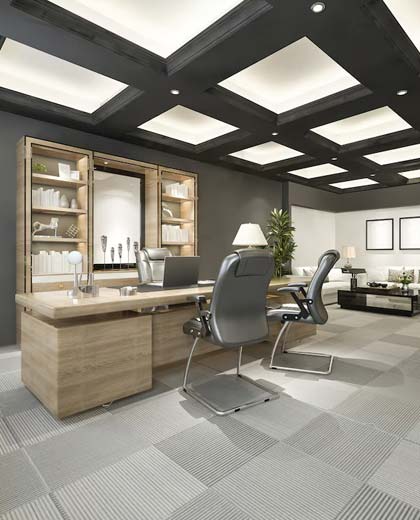
Basic differences between commercial and residential interiors
| Topic | Residential interiors | Commercial Interior |
|---|---|---|
| Purpose | The purpose is to create a comfortable, personal space for living. It focuses on the homeowner’s preferences, lifestyle, and emotional connection to the space. | To create a functional space that serves the needs of the business, its employees, and customers. The design must be efficient, and brand-oriented, with regulatory standards. |
| Design requirements | The design revolves around creating warmth and a sense of home. The use of color, textures, lighting, and décor are chosen to reflect personal taste and comfort. | It prioritizes function, branding, and efficiency. Spaces are designed to accommodate large groups of people, support business activities, and higher usage. |
| Customization | Every aspect of the design is personalized to the homeowner's liking. This could range from choosing furniture to picking out specific colors or family heirlooms. | While commercial spaces can also be customized, the customization is often geared toward enhancing the company’s brand image. It serves the needs of the business. |
| Durability and materials | Homes may use various materials, some delicate, based on aesthetics rather than durability. High-end furniture and fabrics may be selected more for their visual appeal. | Materials used in this must be more durable due to the higher volume of traffic. Commercial flooring, furniture, and fixtures are common, and choices are made based on long-term cost efficiency. |
| Cost | Budgets for these interiors tend to be smaller and more flexible. Homeowners often have the freedom to cut on particular elements like a designer sofa or a piece of artwork. | Budgets for interiors are typically larger, but they also come with constraints. Businesses often require a (ROI) from their space, which means careful planning of costs. |
| Government Regulations | While there are building codes to follow, such as fire safety and electrical standards. It faces fewer regulatory hurdles. | These interiors must comply with extensive government regulations, including fire exits, disability access, emergency lighting, and specific safety features. |
Final remark
To conclude, we can say that, the difference between commercial and residential interior design lies primarily in their objectives, functionalities, and aesthetic approaches. Both types of interior design play crucial roles in their respective areas. As one of the leading interior design firms in Bangladesh, Barnomala Architects & Interior offers top-notch services to its clients.
Their team of expert designers creativity delivers the best solutions that meet the unique demands of both residential and commercial spaces. Call us at +8801713776555 or schedule a meeting for a consultation. Let’s create spaces that not only meet your needs but also inspire.
Get a QuotationFrequently asked questions
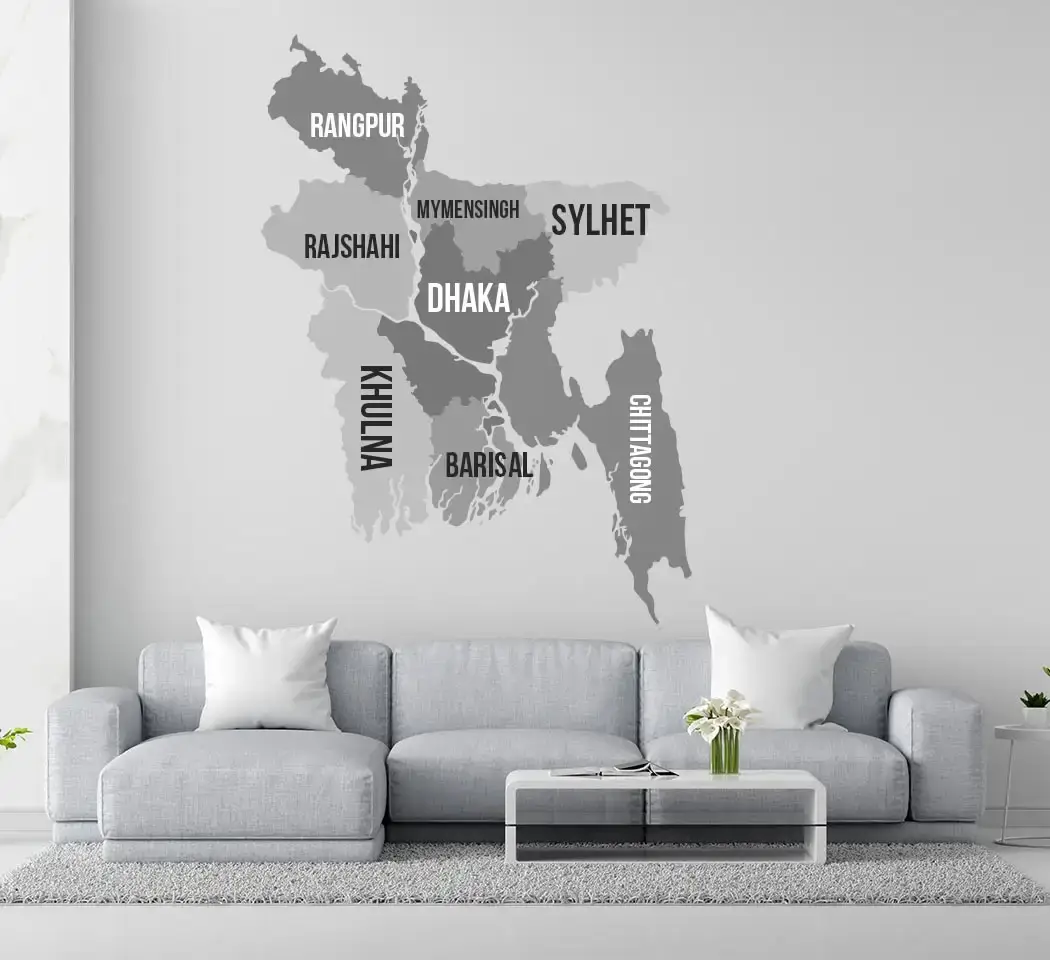
Our Service Area
Please tell us about your residential home space or commercial space requirements. One of our creative, modern interior designers or interior decorator will walk you through our service options.
- Aftabnagar
- Bagerhat
- Bailey Road
- Bandarban
- Barguna
- Baridhara Diplomatic Zone
- Barishal
- Bashundhara
- Bhola
- Bogra
- Brahmanbaria
- Chandpur
- Chittagong
- Chuadanga
- Comilla
- Cox's Bazar
- Dhaka
- Dhanmondi
- Dinajpur
- Faridpur
- Farmgate
- Feni
- Gaibandha
- Gazipur
- Gopalganj
- Habiganj
- Jamalpur
- Jessore
- Jhalokati
- Jhenaidah
- Joypurhat
- Kakrail
- Khagrachhari
- Khulna
- Kishoreganj
- Kuakata
- Kurigram
- Kushtia
- Lakshmipur
- Lalmonirhat
- Madaripur
- Magura
- Manikganj
- Meherpur
- Mogbazar
- Mohammadpur
- Motijheel
- Moulvibazar
- Munshiganj
- Mymensingh
- Naogaon
- Narail
- Narayanganj
- Narsingdi
- Natore
- Nawabganj
- Netrakona
- New Elephant Road
- New Market
- Nilphamari
- Noakhali
- Pabna
- Paltan
- Panchagarh
- Patuakhali
- Pirojpur
- Rajbari
- Rajshahi
- Rangamati
- Rangpur
- Satkhira
- Segunbagicha
- Shariatpur
- Sherpur
- Sirajganj
- sreemangal
- Sunamganj
- Sylhet
- Tangail
- Thakurgaon
- Uttara
Get free estimation about your project! Feel free to call or contact us.

